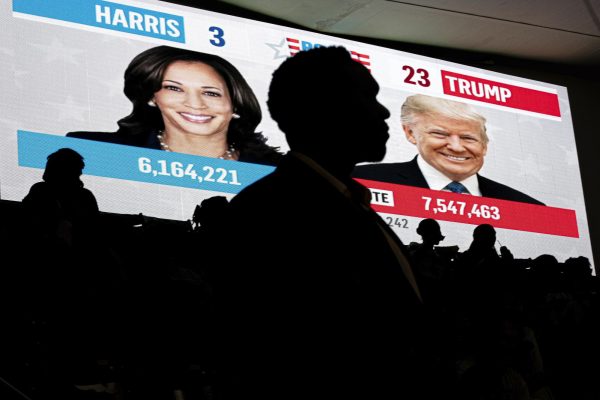Being Right: The “Infrastructure” Plan Won’t Benefit US Economy
In a March 31 speech in Pittsburgh, President Joe Biden unveiled his $2.3 trillion American Jobs Plan. In the words of the White House, it is a proposal to “reimagine and rebuild a new economy” with “an investment in America that will create millions of good jobs, rebuild our country’s infrastructure and position the United States to out-compete China.” The problem is, the so-called American Jobs Plan isn’t really about jobs, and it isn’t about infrastructure either. It is a $2.3 trillion glut of left-wing wishlist items, with some money for roads and bridges thrown in, too.
There is a broad bipartisan consensus that America’s infrastructure is in need of an upgrade, and Democrats and Republicans agree that this investment needs to be about more than just potholes and crumbling bridges. It is time to make the necessary investments to ensure we beat China in the race to win the 21st Century, like universal high-speed broadband and more robust workforce development programs. If President Biden were interested in practicing the unity he preaches, he could have put forth a plan addressing these issues that would earn support from Republicans and Democrats alike. He did not. The two biggest line items in his proposal barely qualify as “infrastructure” at all. It spends $213 billion on “affordable housing,” primarily focused on retrofitting homes to make them more energy-efficient. I’m not quite sure how putting a government-funded solar panel on the roof is going to improve the life of a working family. I think we can find a better way to spend a quarter of a trillion dollars. More egregiously, the proposal spends $174 billion to spur use of electric vehicles, predicated on a nationwide plan to construct 500,000 charging stations that “experts say … is but a tiny fraction of what is needed to make electric vehicles a mainstream option,” according to a recent New York Times article. For comparison, spending on bridges, roads and other physical infrastructure — the supposed heart of the bill — is approximately $113 billion, or only 5% of the bill’s total cost.
The Biden proposal’s tax increases are also sure to draw opposition. Biden calls for income tax increases for those making over $400,000, but the bulk of the proposal’s new revenue comes from increasing the corporate income tax from 21% to 28%. According to the Tax Foundation, the corporate tax increase would make the U.S.’ average federal-state combined corporate tax rate higher than any of our major trading partners and eliminate almost 160,000 jobs. Moreover, the administration’s claim that the bill is entirely paid for by increased taxes is a bit misleading: the bill’s spending occurs over eight years, but it would take 15 years for the tax hikes to offset this spending. As Ronald Reagan once said, “a government bureau is the nearest thing to eternal life we’ll ever see on this earth.” It is highly improbable that the proposed programs will stop after the eight-year period, meaning that the proposal is likely to add to the already sky-high national debt.
The most dangerous part of the Biden plan, though, is the paradigm shift it represents. From Ronald Reagan’s statement that “government is not the solution to our problem; government is the problem” to Bill Clinton’s 1996 declaration that “the era of big government is over,” a reflexive belief in market forces and wariness about the government’s ability to effectively intervene in the economy has defined American economic policy for 40 years. The Biden team is openly eager to flip this thinking on its head: Treasury Secretary Janet Yellen was recently quoted in The Wall Street Journal saying “there appear to have been a broad-based set of structural changes that have had a very significant effect on how the economy works … there are a lot of ways in which I think our understanding of the economy has shifted.” This new understanding is characterized by a belief that inflation is a thing of the past and that even if inflation picks up in an overheated Biden economy, the Federal Reserve has the tools to manage it away. And it all but ignores the $28 trillion national debt hanging over our heads, hoping that low interest rates will make it sustainable to borrow indefinitely. The Biden plan is, above all, a gamble: a belief that in a new economy, the government can outrun the forces of economics. For a worthy plan, it might be a risk worth taking. For windmills and Teslas? Not a chance.









